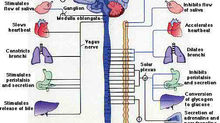Hypnotherapy Past and Present
- tomjlynam

- Oct 13, 2014
- 3 min read
“Look into the eyes, not around the eyes, directly into the eyes…”, fortunately the idea of concentric, enlarged iris’ bearing down on you with some suspiciously circus esque character playing puppet master with your mind is beginning to wane, or is it? Stage hypnotism is more popular than ever and despite being slightly comedic, serves to preserve some unhelpful misconceptions regarding hypnosis. So what is hypnosis? How does it work?
Hypnosis’ etymology is rooted in the ancient Greek tongue, ‘hypnos’ meaning sleep, and the suffix of ‘-osis’ meaning condition. Although linguistically we may trace the word back to ancient Greece the exact origins of hypnosis are unclear, however we know that the phenomenon was also practised in Egypt and by the Hindus during ancient times, and the Persians in the early middle ages. By the 1500’s hypnosis had been adopted by left field physicians and doctors in Europe, the epicentre being Vienna in the heart of the Austro-Hungarian empire of which subsequent notable residents would take an interest in hypnosis during the 19th century, namely Carl Jung and Sigmund Freud.
The period of European enlightenment was not kind to hypnosis. It was here amid the tense atmosphere and friction between societies driven by religion and the rise of scientific thought that the suspicions and demonization of hypnosis arose and Franz Anton Mesmer both popularised and played a key role in the making of its mythology. Being influenced by Isaac Newton’s theories around gravity, Mesmer used magnets to alter the flow of bodily functions within affected individuals, as the moon does the oceans. He enjoyed much success, holding public demonstrations using wild and flamboyant contraptions said to help him channel magnetic powers, until in 1784 the King of France, Louis XVI, investigated his practise, discrediting his ideas surrounding these early roots of hypnosis which he referred to as ‘animal magnetism’. Crucially, the conclusion of the inquiry was that the apparent successes of Mesmer stemmed from the imagination of his patients and their sheer belief that the process would work.
Imagination. What a funny thing. That ability to construct vivid, complex scenes, develop abstract notions, relive past experiences, project ourselves into possible future contexts. Somehow our modern thinking suggests anything inside your mind isn’t real, if you can’t touch it, it isn’t there. Let’s take the body’s stress response mechanism. We imagine speaking in front of an audience, a scenario we are worried about; adrenaline is released, heart rate increases, we feel anxious. The symptoms are clearly real, but the trigger isn’t? This doesn’t make sense. The imagination produces ‘real world’ change and we find that our thoughts are simply one end of an unbroken continuum running from mind to bodily response and vice versa. It seems King Louis was right.
Hypnotherapy is about changing negative behaviours so it seems logical to think about how these behaviours develop and how they are stored in the mind for if we desire to change them, we must first be able to access them. Crudely, the brain can be divided into two categories; the old brain and the new brain. The new brain developed late in our evolution and deals with the conscious and rational aspects of our awareness, for example allowing us to process and analyse maths and logic. The old brain, also referred to as the reptilian brain, deals with subconscious processes such as breathing, secretive functions and importantly houses our learned behaviours and habitual thinking. It is this schism between the two brains that we are trying to move between when practising hypnotherapy.
When attempting to communicate with something, it must be done through a mutually understandable system. The primary communication systems we use today are made up of letters, words, grammatical rules, and are born of the new, logical mind. It is a tool devised long after the old regions had become fully developed. If we want to converse with the old mind we must use its language, and this language is imagination. Carl Jung spent much of his life trying to unravel the subconscious and his conclusion that dreams and images welling up from the subconscious make little sense to the rational mind is based upon this misunderstanding between the two brains.
The learning of a new behaviour begins in the new, conscious mind and as it becomes learned and we no longer have to think of its complexities it passes into the subconscious. It is at this point behaviours become unreachable by the language of the conscious mind, if we want to communicate and tell them they are unreasonable and ask whether they wouldn’t mind being a little less destructive then we must do so in a manner









Comments